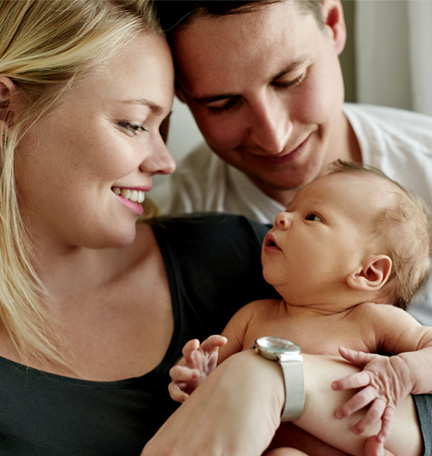Like suffering sleepless nights with a crying infant, you may not be prepared for the financial reality of raising your child. Here’s where you can expect to pay — and some guidance on how to keep those costs down.
There’s no way around it: Raising a family is expensive. So expensive, in fact, that the U.S. Department of Agriculture (USDA) estimated in 2015 that middle-income families will spend $233,610 in child-rearing costs through age 17.
The estimated amount for families with lower incomes is $174,690 while more affluent families are expected to spend $372,210. And these figures don’t even include college expenses.
So where does all that money go? Here’s a breakdown at each stage — and some guidance on how to prepare financially for your child’s journey to adulthood.
Bringing Home Baby
You already know that infant health care, diapers, formula, clothing, car seats, and strollers are going to make a dent in your wallet. But perhaps the biggest hidden cost not included in the USDA’s estimates isn’t one that you’ll pay for directly: the loss of income during maternity or paternity leave.
Since the federal government does not provide any kind of aid during maternity or paternity leave, most parents are forced to take unpaid leave after their baby is born, says Michael Kostelnik, founder and president of Family Life Financial Planning in Mentor, Ohio.
“Most people can survive without pay for six to eight weeks,” he adds. “But it might be hard for some.”
Make sure you know your employer’s family leave policy once you get pregnant, and if it’s unpaid, try not to take a single sick day or vacation day over the next nine months. You’ll need those paid days off for when the baby arrives.
The Toddler Times
Housing accounts for the largest expenditure of child rearing at 29 percent, with food, at 18 percent, accounting for the second-greatest cost, according to the USDA. The third largest — child care and education, at 16 percent — may hit hardest when your little one starts walking.
That’s because the average cost of center-based child care can cost parents an annual $9,697, or $808.08 per month, according to Child Care Aware® of America. Additionally, the annual cost of center-based child care for one child takes up 10 percent of a married couple’s income and 36 percent for single parents.
For families without access to affordable alternatives, the cost of day care can seem overwhelming. But help is available — you just have to ask.
“There’s state money you can apply for, and even day care scholarships,” Kostelnik says. “Also, always ask a school or day care center if they offer needs-based money. You’d be surprised how much money is out there. People just don’t think to ask.”
The Taxing Teens
Teenagers often require more money for food, clothes, extracurricular activities, and transportation, but as high school graduation nears, a parent’s financial focus often shifts to paying for college. Parents shouldn’t wait until their kids are in high school to start planning for college, though, Kostelnik says.
“The earlier you start, the simpler the solution,” he says.
Kostelnik recommends starting a 529 plan when your child is in infancy, since the money grows tax-deferred. You could also consider a Uniform Transfer to Minors Act (UTMA) account, a simple trust that doesn’t have to be used for college if your child chooses not to go.
However, Kostelnik says parents shouldn’t forget about their own retirement needs when planning for their kids’ college years. In a sense, it’s another cost to consider when you start raising a family.
“If you have no retirement savings, you could one day become a burden to your kids,” he says.










